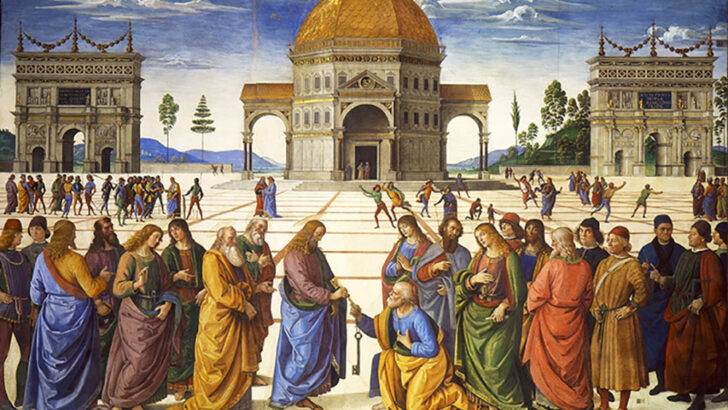Easter being the most important feast day in the Christian calendar has always attracted artists. Each incident of Holy Week from the Last Supper, the arrest in the garden, the trial before Pontius Pilate, the denials by Peter, the Crucifixion, the Resurrection, the women at the empty tomb: each of these has been the subject of paintings by innumerable artists.
They have helped us all to realise what St Ignatius, at the start of the Spiritual Exercises, called viendo el lujar – seeing the place, or more formally, what his expositors call ‘composition of place’.
Keeping in mind an image of say the Crucifixion, helps the meditation to deepen their sense of understanding.
For myself, I have a preference for the vast catalogue of paintings by the French-born painter Jacques Joseph Tissot (d. 1902), also known as James Tissot in England, covering the life and passion of Jesus in extraordinary detail.
On very many occasions I have chosen his images as providing the most appropriate illustrations for articles on these book pages.
Theology
But in art history this was not always the case. Tissot, working in the decades at the end of the 19th Century was originally a society painter; but a tragedy in his private life led him into a greater realisation of religion, and what became the mammoth task of his last years.
In his paintings he tried to recreate from what he thought to be the hardly changed daily life of Palestine the sights and scenes of the life of Jesus. He worked, so to speak, as an archaeologist or historian might.
But this was not always the approach taken by painters in the Renaissance. For instance I have long been fascinated by Pietro Perugino’s vast fresco, The Delivery of the Keys (1482), in the Sistine Chapel, showing Jesus bestowing on St Peter the symbolic keys of the kingdom of heaven, a key element in the Petrine claims of the Vatican.
Jesus and the apostles on this important occasion are presented as living in a stylised Renaissance city (perhaps inspired by Florence) with the piazza spread out behind filled with scenes of everyday life. (Perugino, by the way, was reputedly a man of little religion.)
As a Christian, his was a medieval vision married to a totally modern style of art”
This makes quite a contrast to Tissot. But it also makes a different theological point about not about the Jesus of history as Tissot does, but the Christ of theology, showing that the events related in the New Testament were not just ‘in the past’ that they have a life and continuation in the life of today.
A similar idea possessed the British artist Stanley Spencer (died 1959). His large painting, done in the late 1920s, showing the Final Resurrection taking place in the cemetery of Cookham, the rural village he lived in.
He managed to also include, to generalise the humanity of the image, a group of African persons. (Spencer’s religious views are explored in the two biographies about him, by Kennth Pople (Collins) and Duncan Robinson (Phaidon), both still available.)
The theme, however modern the style, echoes much medieval art, both in carving and art work, showing the resurrection of the great and powerful in all their naked human fragility, including also senior Churchmen.
As a Christian, his was a medieval vision married to a totally modern style of art.
This, too, expounds a different theological point, that though we seem to live always in a temporal period we are, always, sub specie aeternitatis.
Significance
Of course, art historians these days do not always expound or explain the theology involved in these very different works of art. That kind of thing has nothing to do with art appreciation – or as carried out by tour guides, appreciation at all – but to a realm of private judgment. But this surely is to leave the visitor unenlightened about aspects of his work that were of central importance to the artist.
The importance of art to faith is perhaps not surprising given the long standing legend of the Church that the Apostle Luke was a painter. Indeed it is held by some that the imagery of many icons comes down to us from the style of the apostle.
But I have long suspected that if indeed he was a painter that he would have worked more in the style of the supremely human images of the Egyptian coffin art of the first centuries of the Christian era, which provide a calm settled idea of the people in the that time who were among the first Christians.
Given the part played by art in the creation of the memories and insights of their faith for Christians, this Easter holiday, a valuable adjunct to the attendance at Church ceremonies, might be a visit to an art gallery in search of the transcendental.


 Peter Costello
Peter Costello The Delivery of the Keys, fresco by Pietro Perugino, Sistine Chapel, Rome.
The Delivery of the Keys, fresco by Pietro Perugino, Sistine Chapel, Rome. 